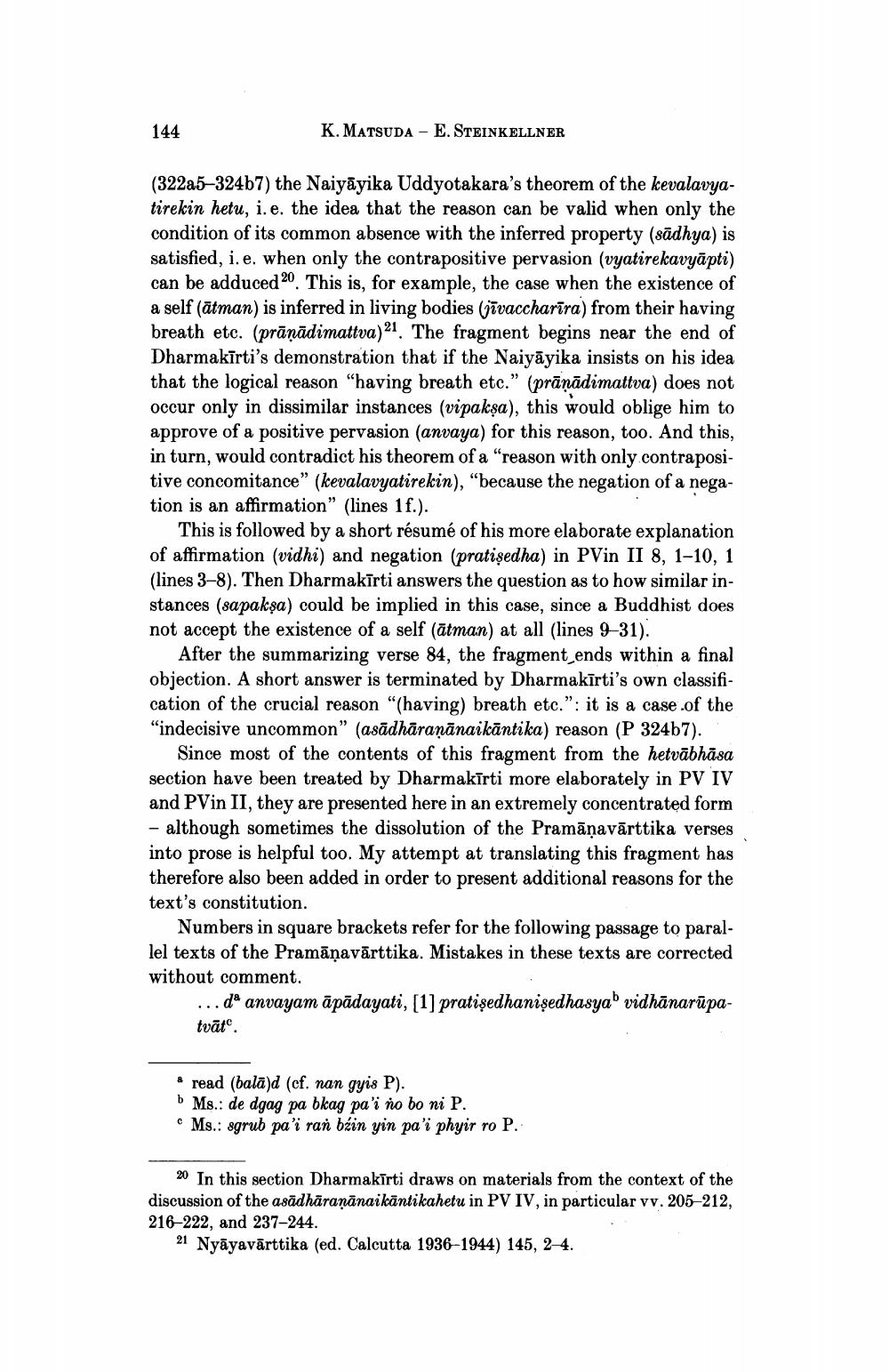________________
144
K. MATSUDA - E. STEINKELLNER
(322a5-324b7) the Naiyāyika Uddyotakara's theorem of the kevalavyatirekin hetu, i.e. the idea that the reason can be valid when only the condition of its common absence with the inferred property (sādhya) is satisfied, i. e. when only the contrapositive pervasion (vyatirekavyāpti) can be adduced 20. This is, for example, the case when the existence of a self (ātman) is inferred in living bodies (jīvaccharīra) from their having breath etc. (prānādimattva) 21. The fragment begins near the end of Dharmakīrti's demonstration that if the Naiyāyika insists on his idea that the logical reason "having breath etc." (prānādimattva) does not occur only in dissimilar instances (vipakşa), this would oblige him to approve of a positive pervasion (anvaya) for this reason, too. And this, in turn, would contradict his theorem of a "reason with only contrapositive concomitance" (kevalavyatirekin), “because the negation of a negation is an affirmation" (lines 1f.).
This is followed by a short résumé of his more elaborate explanation of affirmation (vidhi) and negation (pratişedha) in PVin II 8, 1-10, 1 (lines 3–8). Then Dharmakīrti answers the question as to how similar instances (sapakşa) could be implied in this case, since a Buddhist does not accept the existence of a self (ātman) at all (lines 9-31).
After the summarizing verse 84, the fragment ends within a final objection. A short answer is terminated by Dharmakīrti's own classification of the crucial reason "(having) breath etc.": it is a case of the "indecisive uncommon” (asādhāraṇānaikāntika) reason (P 324b7).
Since most of the contents of this fragment from the hetvābhāsa section have been treated by Dharmakīrti more elaborately in PV IV and PVin II, they are presented here in an extremely concentrated form - although sometimes the dissolution of the Pramāņavārttika verses into prose is helpful too. My attempt at translating this fragment has therefore also been added in order to present additional reasons for the text's constitution.
Numbers in square brackets refer for the following passage to parallel texts of the Pramāņavārttika. Mistakes in these texts are corrected without comment.
... då anvayam āpādayati, [1] pratişedhanişedhasya vidhānarūpatvāto
* read (balā)d (cf. nan gyis P). b Ms.: de dgag pa bkag pa'i no bo ni P.
Ms.: sgrub pa'i ran bżin yin pa'i phyir ro P.
20 In this section Dharmakīrti draws on materials from the context of the discussion of the asādhāraṇānaikāntikahetu in PV IV, in particular vv. 205-212, 216-222, and 237–244.
21 Nyāyavārttika (ed. Calcutta 1936-1944) 145, 2-4.




